What To Do In Your Tucson-Area Yard in April
There have been a few discussions in our private Facebook group lately about how to plant for the area that you live in – not one that you used to live in or wish you did.
While the desert may seem dry and barren if you’ve moved here from a greener locale, it’s amazing what can survive in Tucson on little water – and how beautiful native plants are!
We have a unique desert landscape unlike almost anywhere else. Something is always flowering and figuring out what will thrive in your yard can be an exciting experiment!
April is such a fantastic month – not only is it a great time to plant in your yard or garden, there are also two separate events that celebrate the great outdoors this month!
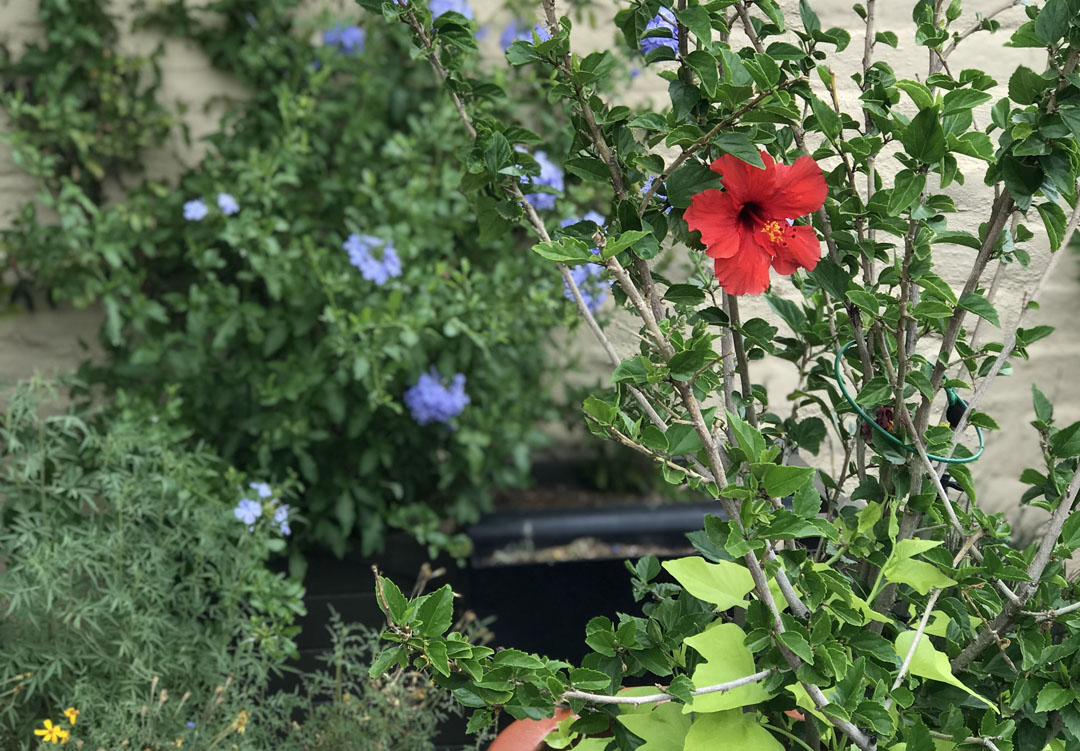
Hibiscus and plumbago are already blooming in early April
Celebrate Arbor Day by Planting Trees
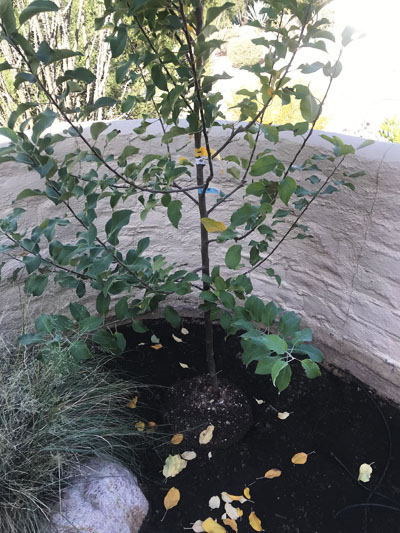
This Anna apple is doing well in a Tucson garden where it can be easily watered.
The first April celebration is Arbor Day, a day created to celebrate trees and to encourage planting them. Luckily, April is a great time to plant trees in your Tucson yard!
If you’re looking for something edible, citrus and fig trees can be planted in April.
Other fruit trees, such as apples, plums, and peaches, can still be planted early in the month. Look for varieties that require less than 400 chill hours to set fruit or you’ll just have a green, leafy tree (which can still look beautiful!). For example, Anna, Golden Dorsett, and Ein Shemer apples all grow well in Tucson.
Other trees can be planted in April as well. Be sure to plant the right tree in the right place. Consider the full size of the tree, if it will have thorns, any power lines that may be in the way, how messy it can be, and whether it needs sun or shade. You’ll also want to understand how much supplemental water it will need; trees that need more water should be planted within range of your existing irrigation system (or in a spot to which drip irrigation can be easily extend).
Check out these resources for more information about growing fruit trees in Tucson:
- Recommended Fruit Trees for Tucson – Info sheet from Mesquite Valley Growers
- Deciduous Fruits & Nuts for the Low Desert – University of Arizona Cooperative Extension
For 2020: Ways to celebrate Arbor Day in this time of social distancing >>
Read more about the benefits of trees in your Tucson-area yard.
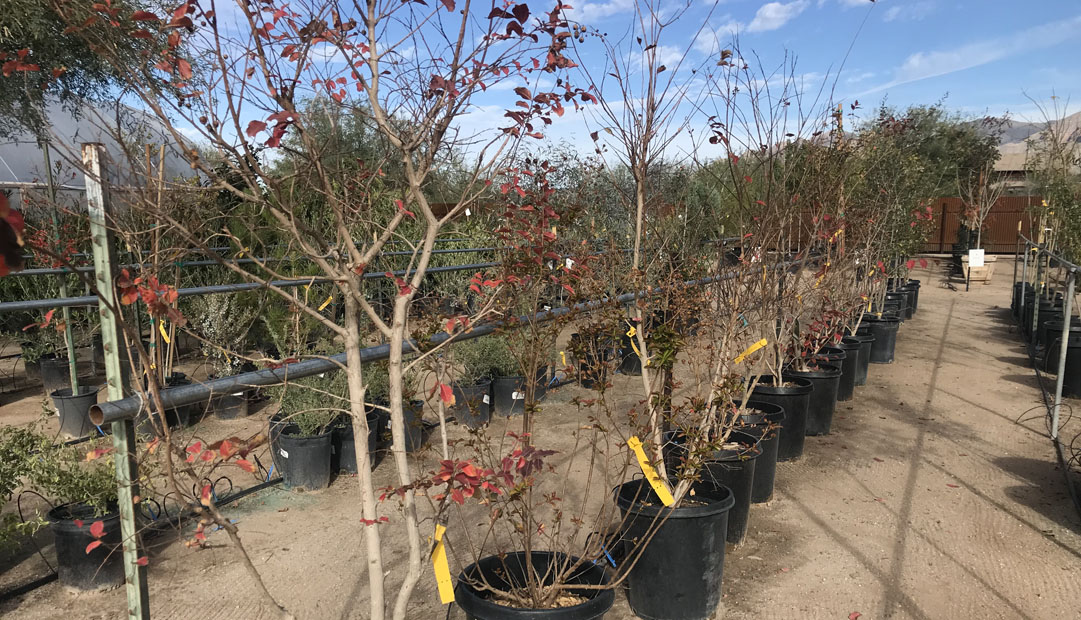
Various types of trees are available for sale at local garden centers like Green Things. They may not look like much right now but they’ll green up quickly!
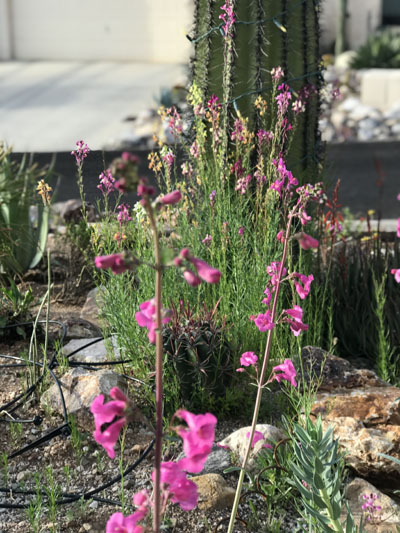
These Moroccan toadflax and Parry’s penstemon return every year without any effort – between the wind and birds, seeds are scattered throughout the yard.
Show your home some love this Earth Day
Earth Day is a reminder to treat our home with care. Here are just some of the ways to show the earth (or just your small corner of it) some love
- start a composting system,
- plant a pollinator-friendly garden,
- learn more about recycling and reusing products, or
- clean up trash from a nearby road or park.
Want wildflowers next year?
If you have wildflowers growing in your yard and want them to reappear next year, you have two options:
- After the flowers have faded, gather ripe seeds and store them in a paper bag. Then scatter the seeds in fall. This approach gives you more control over where wildflowers will appear next year and may result in more blooms than option #2.
- Let nature run its course. Many wildflowers will stay true to their name and will scatter their seeds naturally. Next spring, you’ll be surprised to find how many of them pop up again (sometimes in unexpected places!). Letting the wildflowers go to seed naturally also provides food for birds.
Sow or transplant herbs and vegetables
You can still plant edibles in your Tucson garden. Look for shorter grow times (days to harvest) so that you don’t run up against the mid-summer Tucson heat, especially for vegetables such as cucumbers.
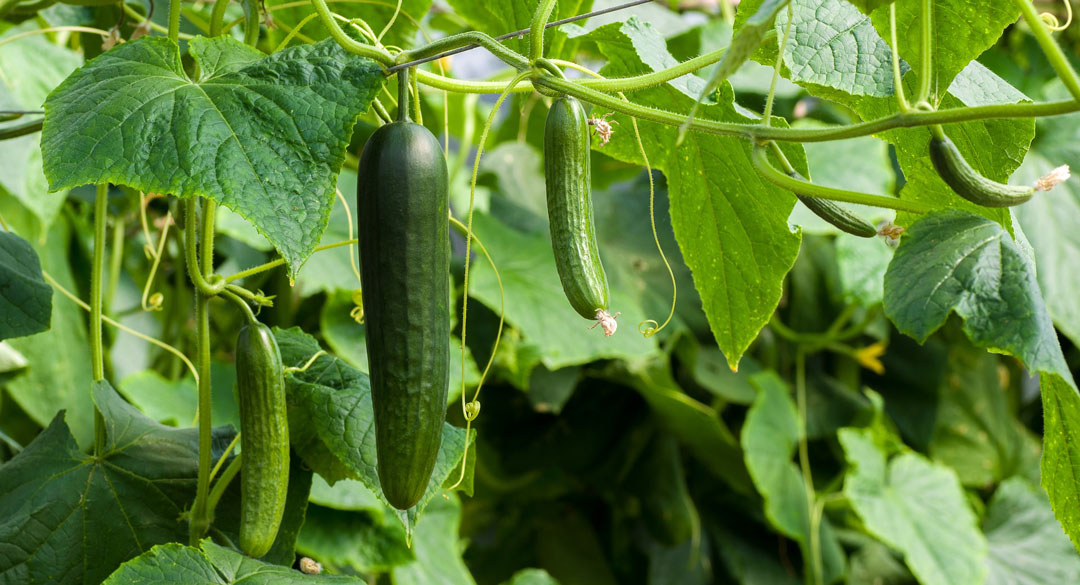
Cucumbers can be grown vertically (on a trellis, fence, or other structure), letting you produce a good crop even in a small garden.
Sow these vegetables from seed
- Beans (bush)
- Black-eyed peas
- Carrots
- Chinese pole beans
- Cucumber
- Pumpkin
- Radish
- Rutabaga
- Summer squash
- Winter squash
- Turnip
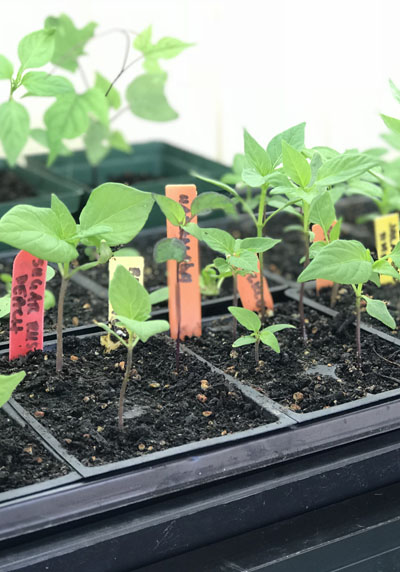
Pepper seedlings ready for transplanting
Transplant these as seedlings
- Cucumber
- Armenian cucumber
- Eggplant
- Jerusalem artichoke
- Melons
- Peppers
- Pumpkin
- Spinach
- Summer squash
- Winter squash
- Sweet potato
- Tomato
- Basil
- Mint
- Oregano
- Rosemary
- Sage
- Tarragon
- Thyme
As the harvest of cool-season vegetables slows down, remove the plants from your garden (if you compost, put them in the compost bin!).
Clean out containers used to grow edibles or annuals over the winter and replant with warm-season vegetables and plants.
Make sure your irrigation system is ready
Check your irrigation system before the heat of the summer arrives.
Look for leaks, and check the drippers, timers, and sprinkler heads to ensure they are working correctly.
You may need to add drip emitters for any new plants that you’ve recently added to your yard. Keep in mind that many native plants often do not need supplemental watering and will happily survive on rainwater alone – but only after they’re well established! Most will need regular watering to get them through their first summer.
As the temperature rises, annuals, fruit trees, and potted plants may need to be watered more deeply and/or frequently.
Add mulch around trees and plants
April is a great time to add mulch around your trees and plants. However, make sure that:
- no mulch is touching the tree trunk or the plants (pull it back a few inches from the plant), and
- you’re not adding too much mulch (2 to 4 inches is plenty in most situations).
Refrain from making a “mulch volcano,” where mulch is piled up in a way that resembles, well, a volcano. Though you may see mulch used this way as you drive around town, it’s harmful to trees (yes, mulch volcanoes kill trees!).
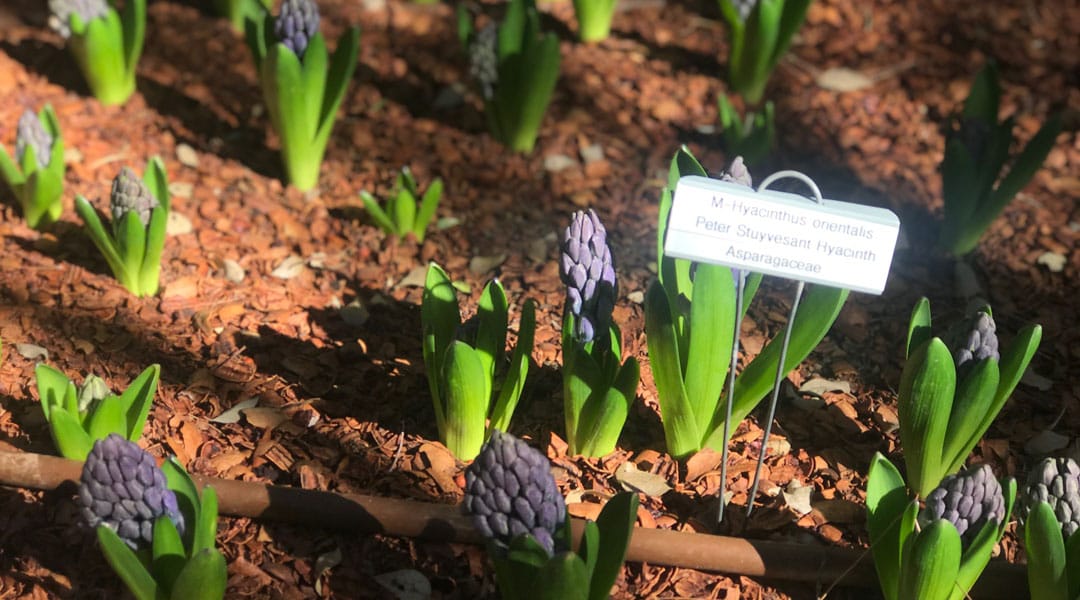
Why use mulch?
Mulch is helpful in regulating the temperature of the soil (it can keep soil cooler during the blazing hot summer months). Organic mulch (made from things like shredded bark, wood chips, straw, compost, pine needles, pecan shells, etc.) will break down over time, adding organic material and nutrients to the soil for the trees and shrubs to absorb. A nice layer of mulch can also keep weeds from popping up between your other plants.
The bugs are coming…
Warmer temperatures mean more insect pests and diseases making an appearance in the garden.
You’ll probably start to see aphids on your plants this month. Yellow-orange aphids are often seen on pine leaf milkweed, and white wooly ones on apple or pyracantha. Often, just rinsing them off with a hose gets rid of them (no need to whack them with insecticide). Celebrate if you spot any ladybugs, as they snack on aphids!
Roses are blooming so check for thrips; they can damage and kill rose blossoms (and aren’t flowers the main reason we grow roses?).
If you see holes appearing in grape leaves, it’s probably grape leaf skeletonizer caterpillars. They can quickly skeletonize an entire grape vine but treatment with Bt (Bacillus thuringiensis) caterpillar control products is quite effective. Just don’t touch the bright yellow and blue striped caterpillars unless you’re wearing gloves – they have stinging spines.
Other Yard Tasks
Don’t prune citrus this month unless removing dead or dying branches.
Plant summer flowers that will survive our summer temperatures. Native plants tend to work best.
Use chemicals sparingly and judiciously. Reptiles of all sorts are now active (there are tons of lizards in the TYGR garden!), birds are nesting, butterflies are appearing in droves, and baby animals are everywhere. Some types of chemicals are harmful to our local wildlife so always start with a low-impact control or treatment method when addressing pest or disease issues in the garden. The animals will thank you!
Keep an eye on your garden as plants start to grow faster so you can spot any issues and quickly resolve them.
And, most of all, enjoy your time outdoors – April is one of the best months to be outside in Tucson!